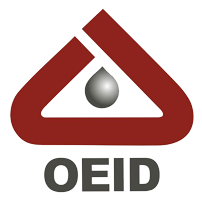Iran plans to double crude exports so long as the increase in shipments is absorbed by global markets, which it sees as stable for the rest of the year, according to a senior official at state-run National Iranian Oil Co.
The country is exporting about 2 million barrels of its daily output of 3.8 million, said Mohsen Ghamsari, NIOC’s director of international affairs. It has regained about 80 percent of the market share it held before the U.S. and European Union tightened sanctions on its oil industry in 2012, he said. Iran plans to double crude exports while targeting Europe as destination for quarter of exports.
“We are not very far away from our pre-sanctions peak and we will soon attain that share,” Ghamsari said in an interview with Bloomberg in Tehran. “Our exports peak is above 4 million barrels a day, and we have plans for that and are waiting for the right conditions,” he said, without elaborating on the timing for such an increase.
The Persian Gulf nation is seeking more than $100 billion in investment from international partners to upgrade its oil industry and reclaim its position as the second-biggest producer in the Organization of Petroleum Exporting Countries, after Saudi Arabia. Iran targets 5.8 million barrels a day in combined production of crude and condensates by 2021. It defied skeptics with a 25 percent surge in production so far in 2016 and aims to reach an eight-year high for daily output of 4 million barrels by the end of the year.
“The market will stay on its present balance, and a return to prices below $30 a barrel is not very probable, at least in the current year,” Ghamsari said. “Our policy is not to stockpile oil in floating offshore storage. In other words, we produce as much as we think the market would absorb.”
Iran is shipping about 25 percent of its exports to European buyers, he said. NIOC is selling bigger volumes in Asia, though it hasn’t increased the number of supply contracts in that region, he said.
“Most of our oil transactions and agreements are long-term-based, leaving a small portion for spot sale,” Ghamsari said. “We are right now in negotiations with many companies, both in Europe and Asia,” he said, without identifying any of them. Iran is taking payments for some sales in euros, he said.
It is worth noting that after the sanctions were lifted, Iran’s export soared more than 40 percent to 2 million barrels a day near the pre-sanction levels. In the meantime, Iran’s oil export to Europe which was limited to 100 thousand bpd to Turkey during the sanctions, increased to more than 500 thousand bpd to other European Customers including Greece, France, Italy, Spain and Poland.

